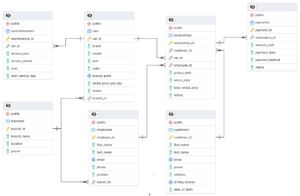Connecting to PostgreSQL Using psql

The `psql` command-line tool is the default PostgreSQL client for interacting with databases. It allows you to execute SQL queries, manage database objects, and perform administrative tasks. In this tutorial, you’ll learn how to connect to a PostgreSQL database using `psql`.
Prerequisites
Before proceeding, ensure you have:
- PostgreSQL installed on your system or running in a Docker container.
- Access to a PostgreSQL database with a username and password.
- The `psql` command-line tool installed (included with PostgreSQL).
Step 1: Open the Terminal
The psql tool is accessed via the terminal (Linux/macOS) or command prompt (Windows). Ensure PostgreSQL is running before proceeding.
To check the status of PostgreSQL (Linux/macOS):
sudo systemctl status postgresql
Output will be as shown below
ramansah@bckinfo:~$ sudo systemctl status postgresql [sudo] password for ramansah: ● postgresql.service - PostgreSQL RDBMS Loaded: loaded (/usr/lib/systemd/system/postgresql.service; enabled; preset: enabled) Active: active (exited) since Wed 2025-03-12 09:01:42 WIB; 1h 35min ago Process: 2236 ExecStart=/bin/true (code=exited, status=0/SUCCESS) Main PID: 2236 (code=exited, status=0/SUCCESS) CPU: 12ms Mar 12 09:01:42 bckinfo systemd[1]: Starting postgresql.service - PostgreSQL RDBMS... Mar 12 09:01:42 bckinfo systemd[1]: Finished postgresql.service - PostgreSQL RDBMS.
If using Docker:
docker ps
The output will be as shown below :
ramansah@bckinfo:~$ docker ps CONTAINER ID IMAGE COMMAND CREATED STATUS PORTS NAMES 200cbc34497a postgres "docker-entrypoint.s…" 6 seconds ago Up 5 seconds 5432/tcp, 0.0.0.0:5444->5444/tcp, [::]:5444->5444/tcp docker_bckinfo
Step 2: Connect to PostgreSQL Locally
To connect as the default PostgreSQL user (postgres), use:
psql -U postgres
Output will be as shown below :
ramansah@bckinfo:~$ sudo su - postgres postgres@bckinfo:~$ psql psql (17.4 (Ubuntu 17.4-1.pgdg24.04+2)) Type "help" for help. postgres=#

We can also specify the database:
psql -U postgres -d mydatabase
If your PostgreSQL server runs on a non-default port (e.g., 5444), specify it:
psql -U postgres -d mydatabase -p 5444
Step 3: Connect to PostgreSQL on a Remote Server
To connect to a remote PostgreSQL server, use:
psql -h remote_server_ip -U myuser -d mydatabase
For example:
psql -h 192.168.64.128 -U rentaladmin -d carrentaldb
Conclusion
The psql tool provides an efficient way to interact with PostgreSQL databases. Whether working locally or connecting remotely, mastering psql will enhance your database management skills.
